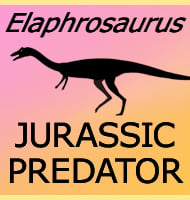Elaphrosaurus
In Depth Elaphrosaurus has been something of an enigma for palaeontologists as while it is generally regarded as a ceratosaur, its proportions are similar to some other kinds of theropods. The overall appearance of Elaphrosaurus is that of a lightweight hunter that relied more upon speed rather than strength to take down prey. The tibia … Read more
